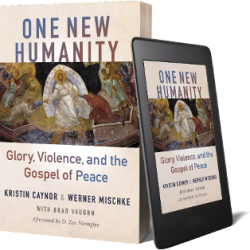Previously, I introduced a method of interpretation that anyone could use, even when the only thing you have in a Bible. The five steps are summarized in this way: 述-印-境-提-释 (shù-yìn-jìng-tí-shì). I explained the first two steps. First, we restate the passage without interpreting it. Second, we make explicit our impressions. All readers have assumptions that must be checked. What’s next?
The five steps are summarized in this way: 述-印-境-提-释 (shù-yìn-jìng-tí-shì). I explained the first two steps. First, we restate the passage without interpreting it. Second, we make explicit our impressions. All readers have assumptions that must be checked. What’s next?
3. Context (情境, qíngjìng)
*This step is so critical that I’m going to give an entire post to unpack what I mean by “context.” I include this information of the backside of the bookmark (in color or black-white).
One of the most important rules of biblical interpretation is simply this: “context is king.” Context decides the meaning of a word, phrase, or idea. That means that neither our pastor, nor our footnotes at the bottom of our Bible, nor any famous teacher determines the meaning of the text.
This also means that not even tradition decides what the passage says. Regardless of how important evangelicals think a certain doctrine is, we have to look at the text afresh. After all, if a text “obviously” has the traditional meaning, then let the text speak for itself.
In chapter two of Saving God’s Face, we explain how evangelicals can commit a logical fallacy (“begging the question”) when we “assume” the gospel. This phrase obviously makes people a little concerned when they first read it. If you can’t assume the gospel, what can you assume? The point however is rather straightforward. We tend to assume our personal articulation and our traditional emphasis is the essence of THE gospel. Yet, all we have to do is see the range of different gospel presentations.
Briefly, I need to address my fellow Chinese speakers. I am well aware that 情境 is a bit vague and doesn’t convey “context” as well as we’d like. However, I can’t tell you how much I’ve discussed this with others. Given the exact subject matter being discussed, having a very general word is more appropriate than a more specific word that is too narrow.
4. Pose Questions (提问, tíwèn)
Notice I did not say answer questions. The entire goal at this stage is to focus our attention on what we don’t know and what we think is most important to figure out. We simply want to brainstorm potentially relevant questions, whether seemingly simple or complex. By thinking of one question, we often discover other more quality questions.
Why is this important? When we ask bad questions, we tend to get bad answers. The questions we ask focus our attention. Sometimes, we don’t realize what we don’t know until we actually try to think of such questions.
In a group, this can be helpful. People will discover they share questions. It will also spur other people to consider issues and themes they had not thought about.
Finally, this step naturally allows people to admit what they don’t know! This is crucial in a face-saving culture. We are all “supposed” to say what we don’t know. We have permission to admit ignorance.
The next post will explain step #5.
Photo Credit: CC 2.0/wikipedia












